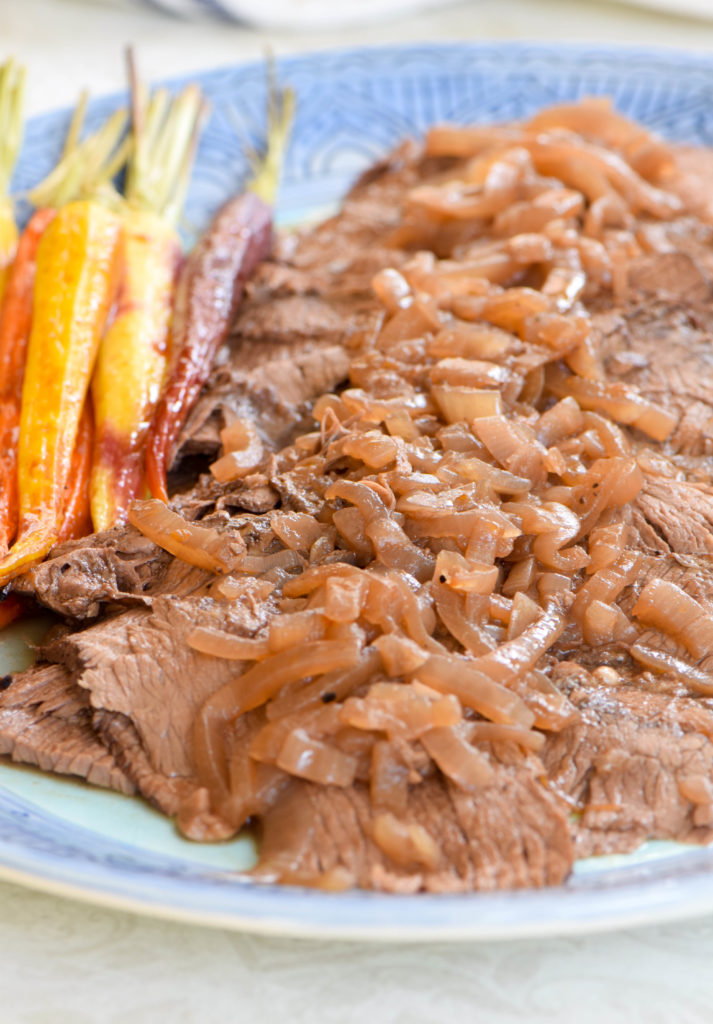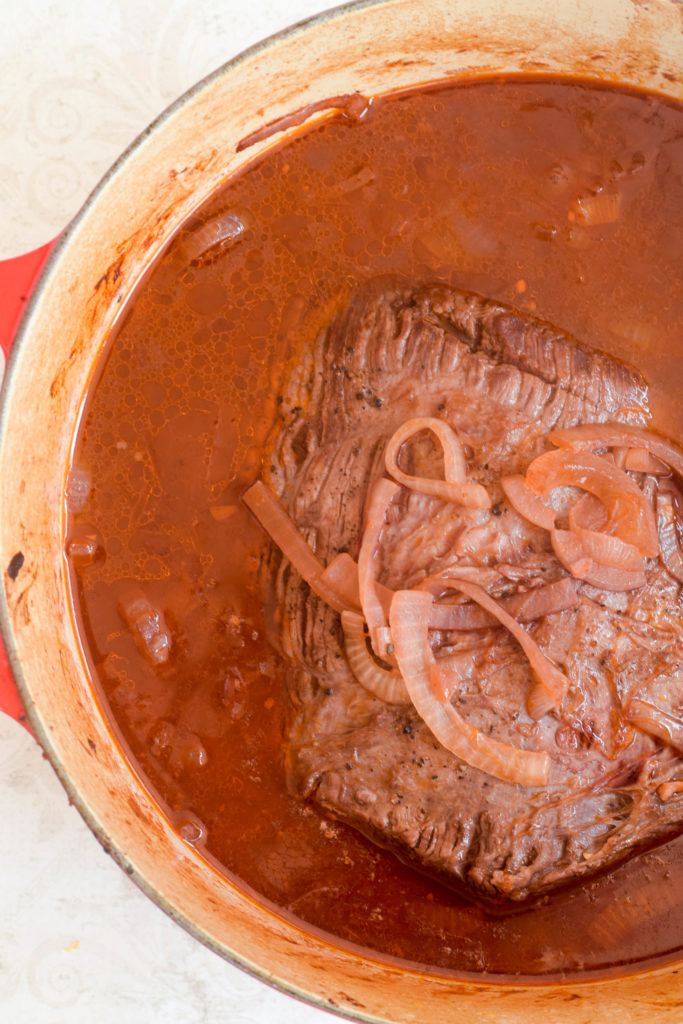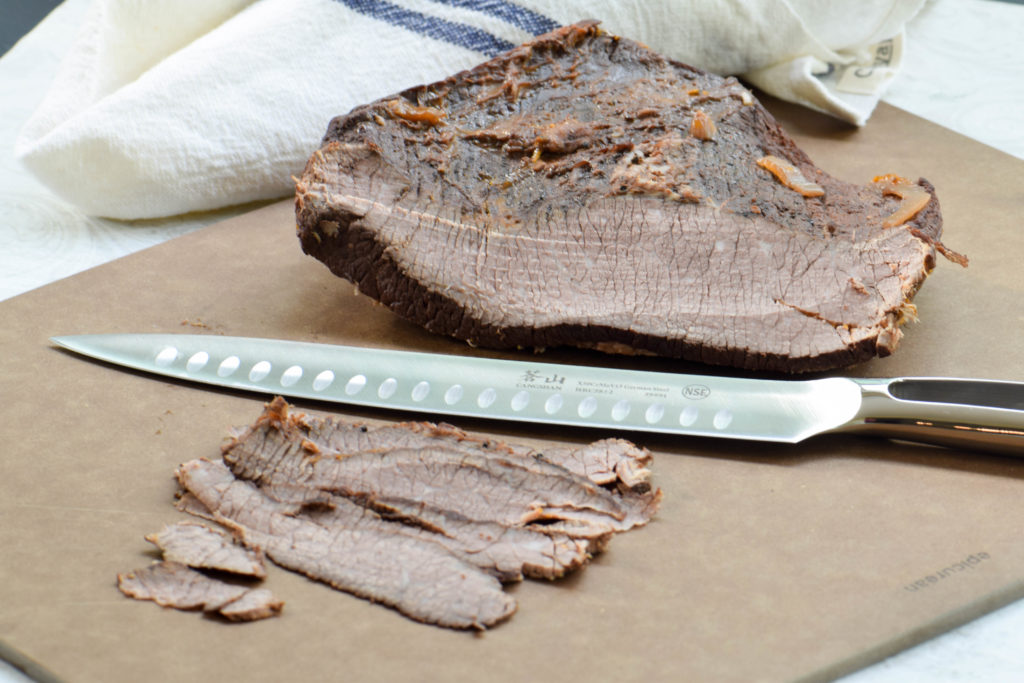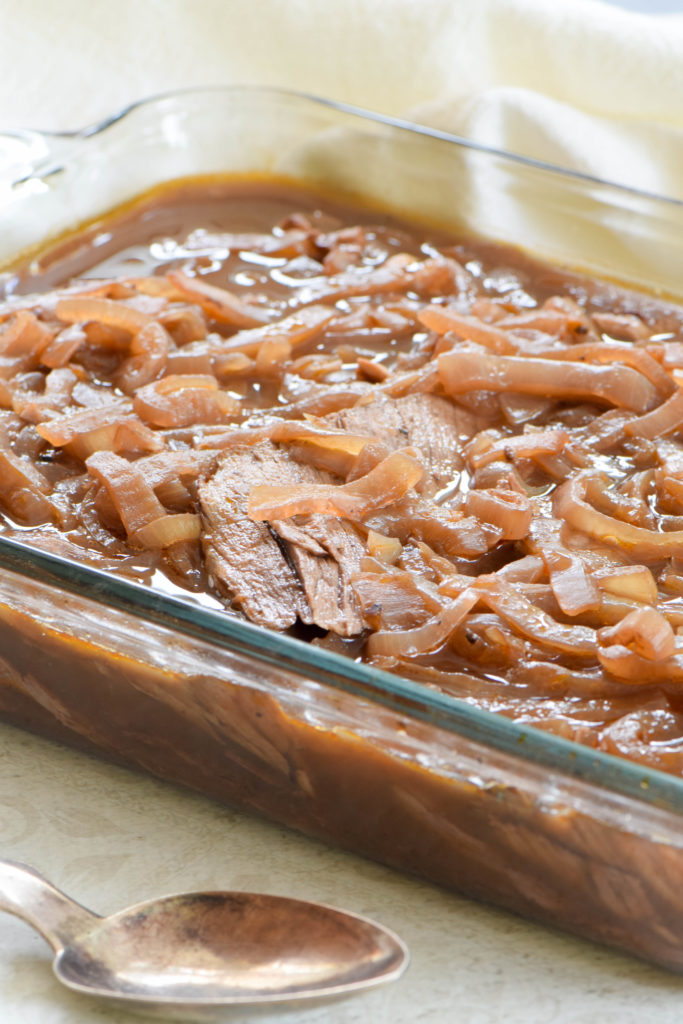Tender, melt-in-your-mouth brisket is the perfect main course for your Passover seder. Best of all? You can prepare it in advance!
Have you planned the menu for your Passover seder? My family will only let me vary the menu so much. They want all their traditional favorites: Matzo ball soup; my mother-in-law’s sweet charoset and, of course, brisket for the main course.
An inexpensive cut of meat, brisket is the ideal food to serve a crowd because you can do all the work in advance. Not only is it possible to make brisket the day before you plan to serve it, it is preferable. But regardless of such mundane considerations as price and convenience: brisket is a wonderful dish to serve on a holiday because it is true comfort food. Shreds of meat that melt in your mouth, winey, tomatoey gravy that soaks everything it touches. Who can resist such satisfying warmth?
The key to tender, melt-in-your-mouth brisket is to braise it. That is, sear it first on the stove, then cook it in the oven, surrounded by liquid, for several hours. Braising’s low and slow way of cooking is makes, cheap, tough cuts of meat fork-tender and delicious. Plus, the brisket’s cooking liquid will become a flavorful gravy to serve alongside the meat.
But here is another potential pitfall. The sauce can end up being greasy because of the all fat from the brisket. The solution is to cook the meat the day before you plan to serve it, as I mentioned. You can then chill the sauce and the fat will congeal at the top, making it easy to remove for a flavorful, and not greasy, sauce.
Another advantage to cooking the brisket the day before your Seder and storing it in the refrigerator is that brisket is easier to slice cold. You want thin slices of meat, so use a sharp carving knife and slice the meat across the grain. The sliced brisket is then reheated in the remaining gravy — from which all the fat has been removed — just an hour prior to serving.
There is always so much to do to prepare for the Seder — isn’t it nice to serve a main dish that can be made the day before? Especially this year with the first Seder falling on a Monday night. Make the brisket on Sunday and save yourself a lot of stress!
Chag sameach Pesach! Happy Passover everyone!
Ingredients
- 5 lb. beef brisket
- 3 TB vegetable oil
- 2 TB butter (or dairy-free margarine if following kosher laws)
- 2 onions, diced
- 4 cloves garlic, minced
- ¼ cup ketchup
- 2 cups beef broth
- 1 bottle fruity red wine such as Zinfandel or Pinot Noir
Instructions
- Preheat the oven to 325.
- Heat the oil in a heavy-bottomed, oven-proof Dutch oven that fits the brisket snugly.
- Once the oil is hot, place the brisket in the pot and turn heat down to medium.
- Brown the brisket on both sides, about five minutes per side, and then remove it from the pot and place on a large plate or cutting board.
- Season the brisket with salt and pepper and set aside.
- Pour out all but 1 TB of the oil and add the butter or margarine and heat over medium heat.
- Add the onion and saute until tender, about ten minutes, scraping up any brown bits on the bottom of the pot with a wooden spoon.
- Add the garlic, ketchup, beef broth, and red wine and stir to combine.
- Return the brisket and any juices that have accumulated to the pot. The liquid should cover about ⅔ of the meat.
- Cover tightly and place pot in oven.
- Cook the brisket for three hours, turning once every hour. If the liquid level gets too low, add more beef broth or water.
- Remove the pot from the oven and refrigerate the meat and gravy separately for at least several hours but preferably overnight.
- To reheat the brisket, skim off any congealed fat from the top of the gravy.
- Preheat oven to 350.
- Using a sharp carving knife, remove the fat cap from the top of the brisket. Slice the brisket against the grain into thin slices.
- Place the sliced brisket into a 3 quart glass baking dish and pour the gravy over the meat.
- Cover the baking dish with foil and bake until the meat and gravy are heated through, 45 minutes to an hour.
- To serve, arrange the slices of meat on a platter and pass the sauce separately.









